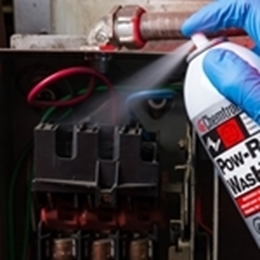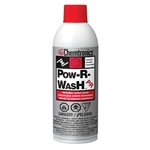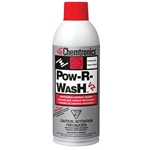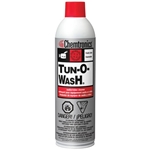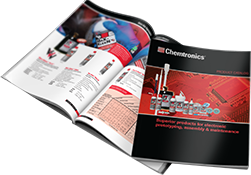Electrical Contact Cleaning
A high purity, electronic contact cleaner will remove environmental contaminants and protect contacts from corrosion and frictional wear. Contact cleaners restore electrical continuity to all electronic and electrical contacts by penetrating and removing insulating oil and grease, conductive carbon soil, and insulative oxides from contact surfaces. By restoring full circuit continuity, Chemtronics contact cleaners improve the performance of all equipment that relies on electrical contacts. Aerosols can be sprayed in any direction, even upside down. Look for the “All-Way Spray” icon on the can. Recommended for every phase of electronics and electrical contact maintenance including:
- Metal contacts
- Plastic-embedded contacts
- Potentiometers
- Relays and switches
- Circuit breakers
- Fuse blocks
- Electronic controls
- Electrical panels
- Motors and armatures
- Plugs and sockets
- Solenoids

